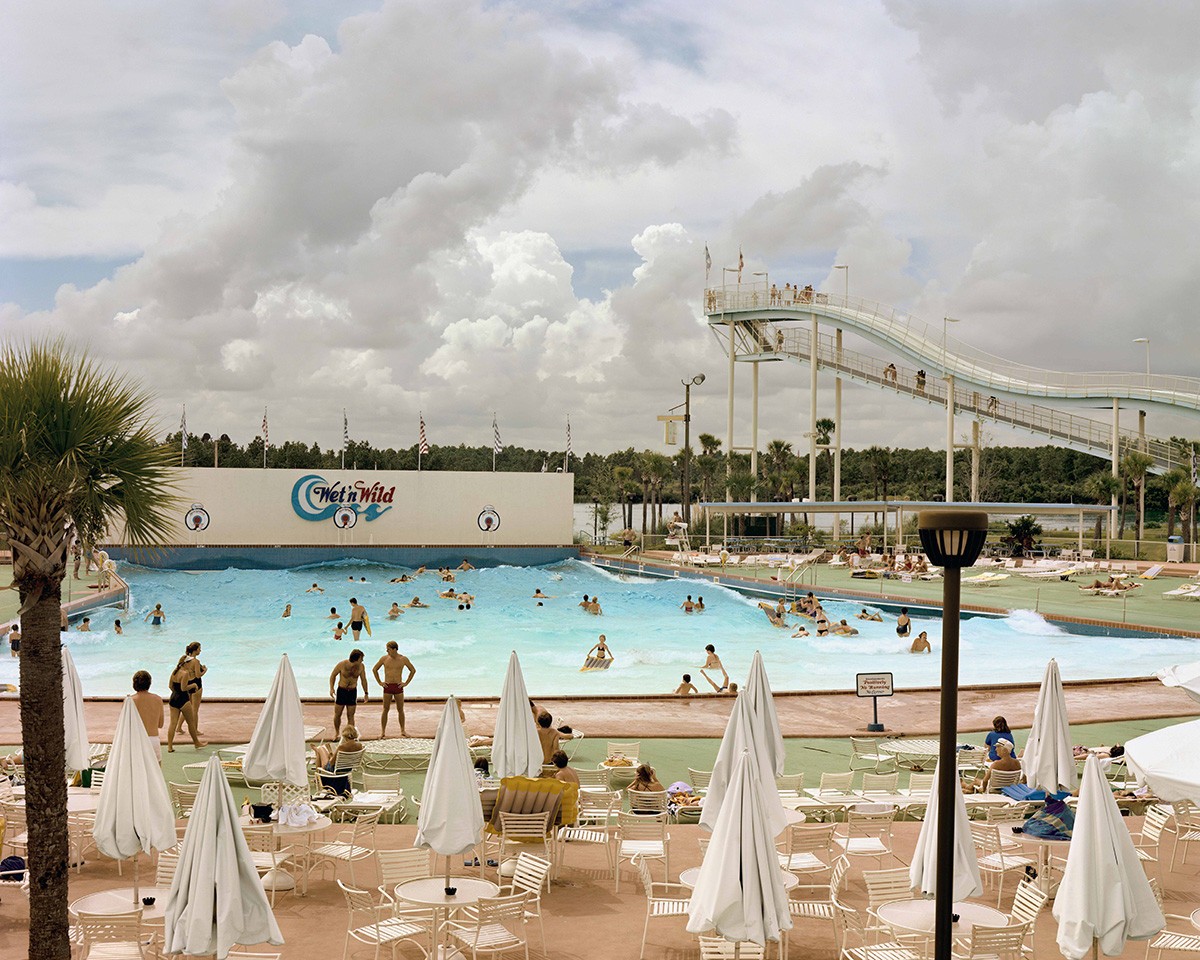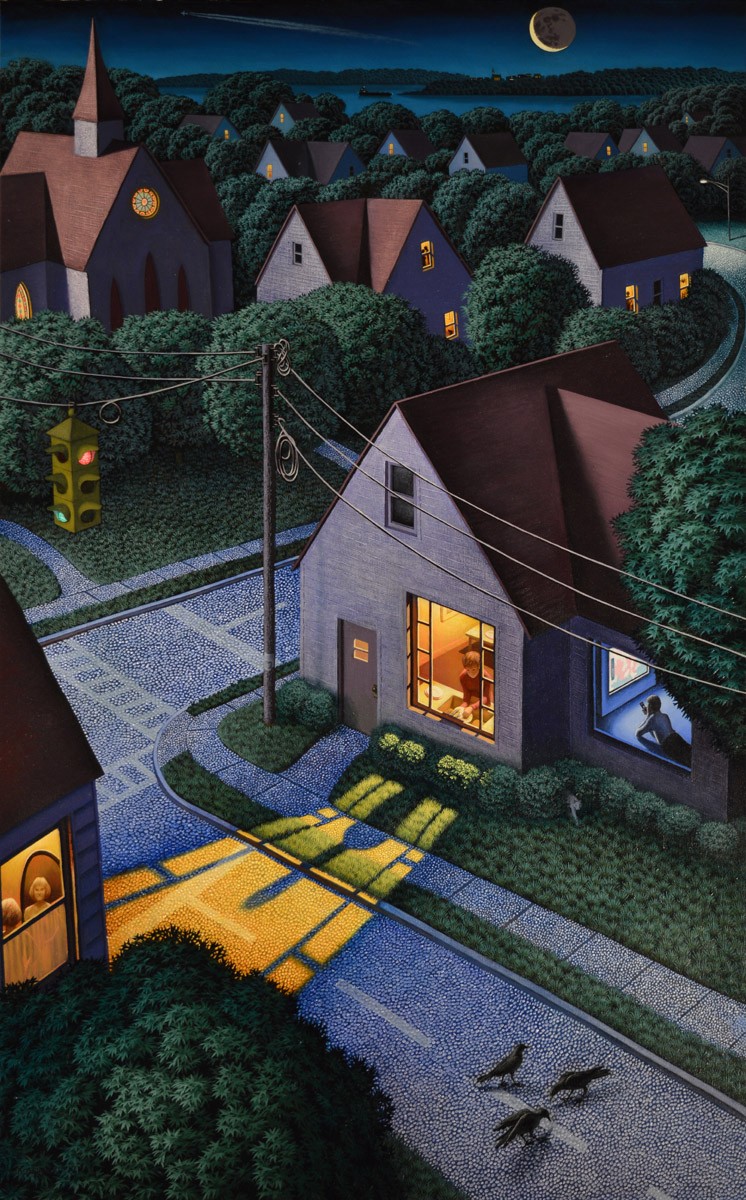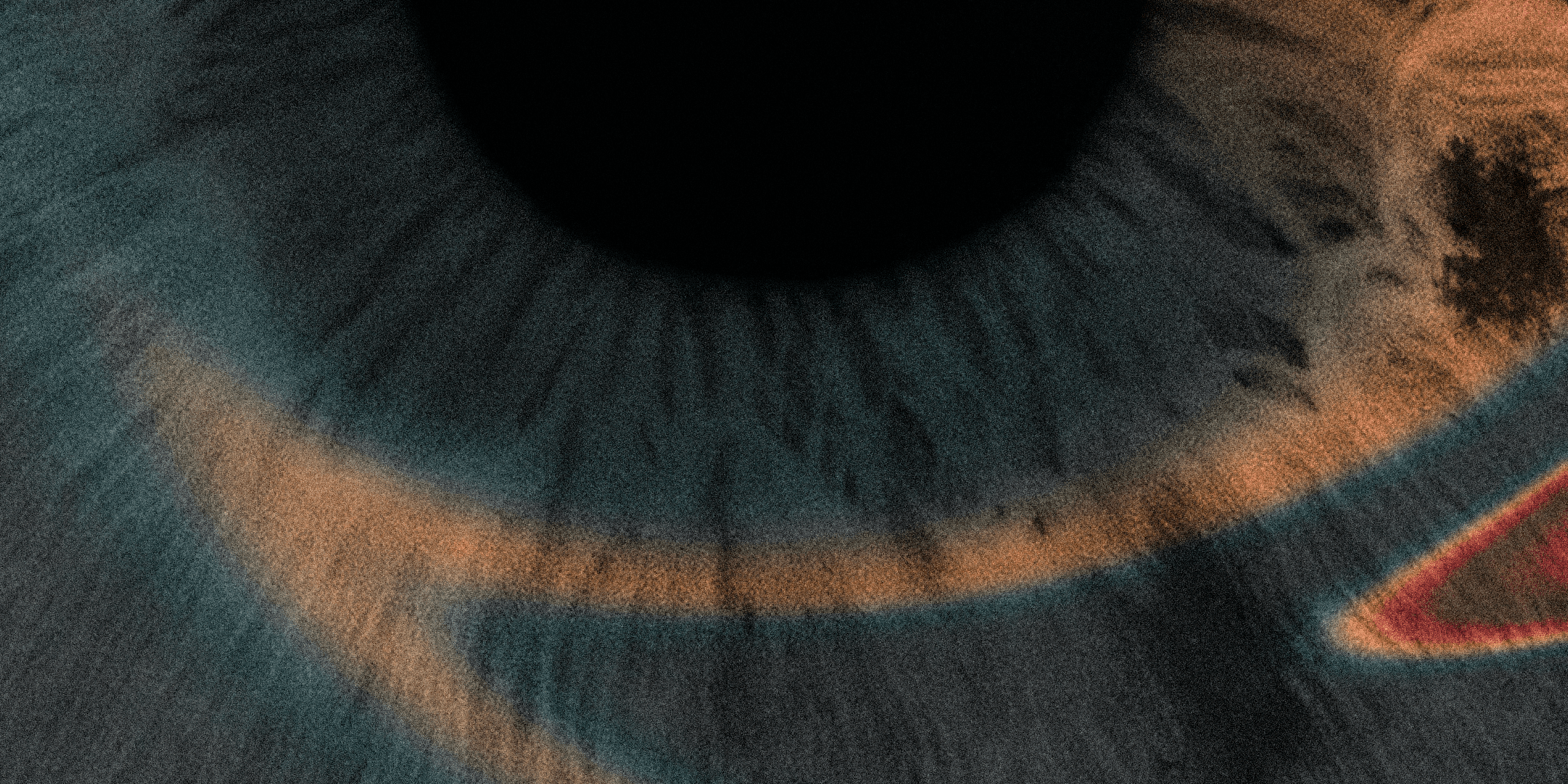Joel Sternfeld’s landmark portrait of American pathos & dreams
Cinema
Jan 11, 2025
by Miss Rosen
A new edition of the iconic photobook American Prospects captures the twilight of an empire.
After winning a Guggenheim Fellowship in 1978, photographer Joel Sternfeld embarked on a road trip in a Volkswagen camper van. Armed with an 8 x 10 large-format camera, he left behind his native Brooklyn and his street photography style to pursue something even bigger while following the rhythm of the seasons across the United States.
Sternfeld recalls that there was an apocalyptic feeling in the air; the nation was still dealing with the aftermath of the Vietnam War's failure and the complete disgrace of Nixon's presidency. In a desperate search for an illusion of normalcy, voters ignored then-President Jimmy Carter's warnings about the gloom infiltrating the nation's soul and elected a B-list Hollywood actor with a trigger finger as president in 1980.
“All my work has revolved around ideas of utopia and dystopia. I think that's what makes America interesting. Many things, all at once.”
Over a decade, Sternfeld returned to the road time and again with additional grants from the NEA and Guggenheim. Working with a large-format camera required a new approach; at seven dollars per film sheet, he immersed himself in the landscape, mentally visualizing images that distilled the emotional complexity of a nation moving toward the dystopian spectrum of its own decline.
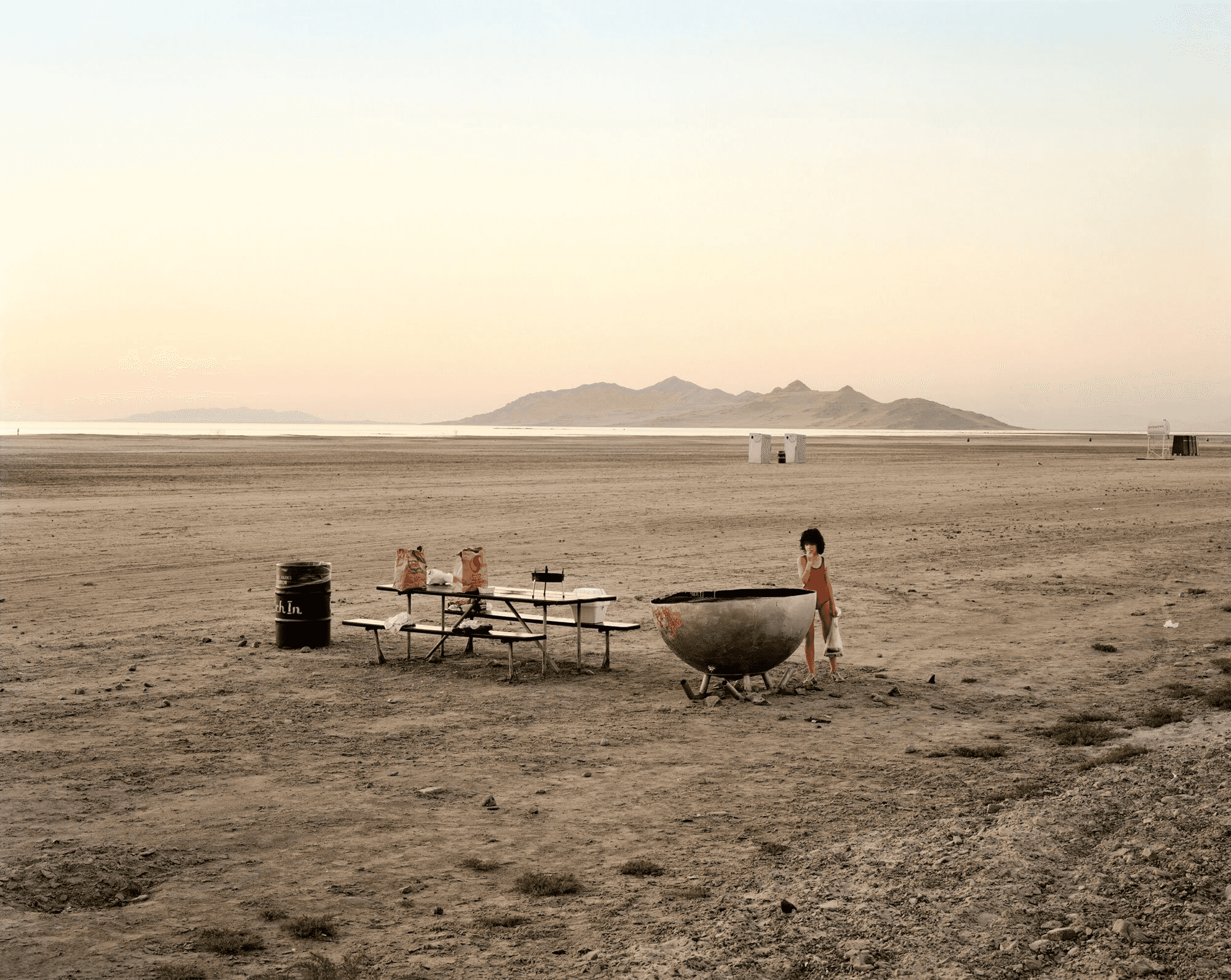
Great Salt Lake, Utah, July 1979
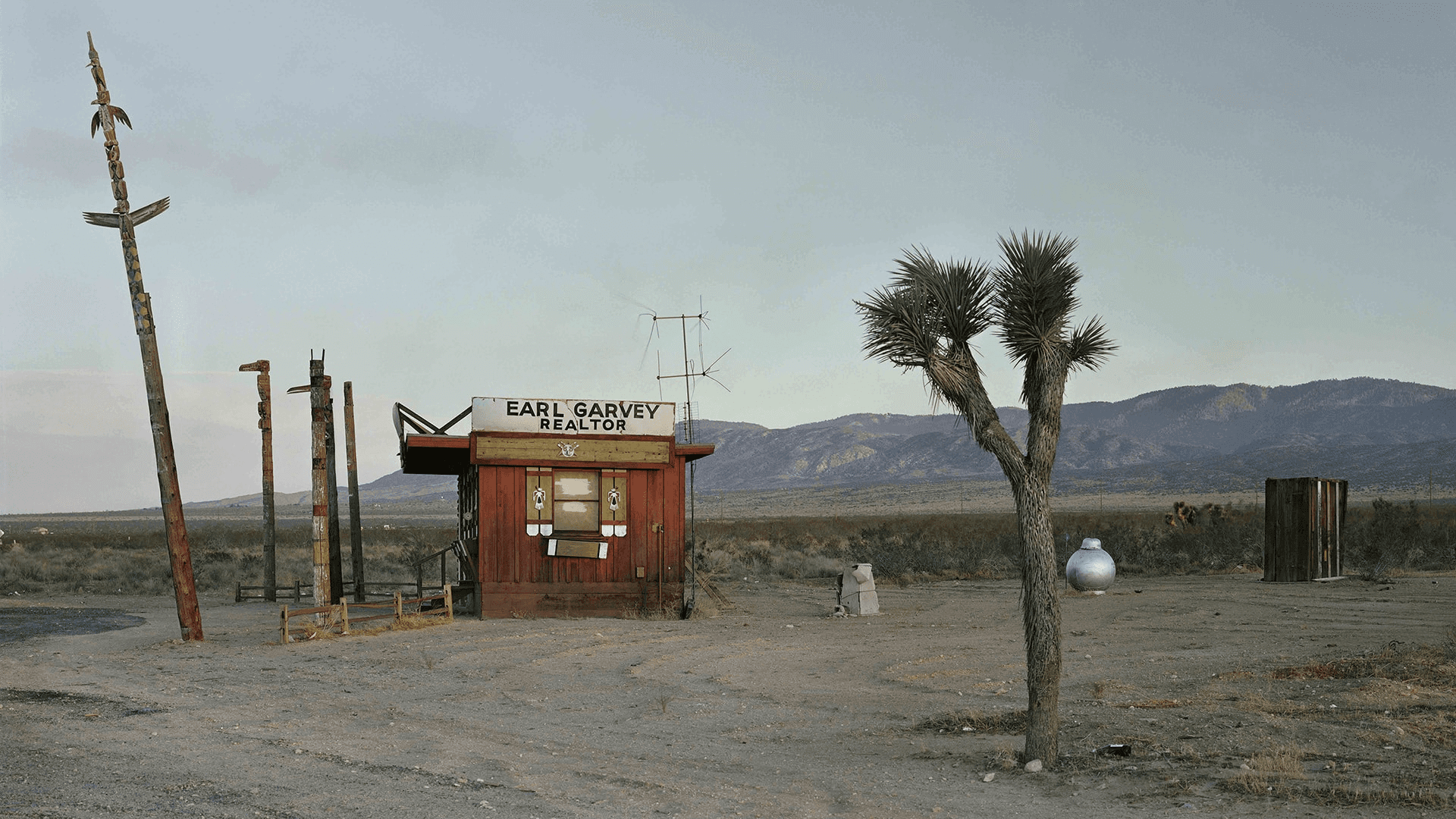
Earl Garvey Realtor, Mojave Desert, California, July 1979
Since the beginning of his career, Sternfeld worked in color and was fascinated by how it could elevate the medium to yet unrevealed levels. Color was an emotionally and mythically charged force with the power to reveal deep psychological truths of time and place. For Sternfeld, the large-format camera proved to be the perfect instrument; its monumental format required him to develop rhythms naturally aligned with the landscape.
“I can walk around all day without taking a single photo, and it's still something active and exciting. I'm always seeing things, thinking things, creating memories.”
In 1987, Sternfeld published his work as American Prospects, receiving great acclaim for his majestic portrayal of runaway Manifest Destiny. Iconic scenes include the exterior of the infamous Attica prison in New York, the Vietnam Veterans Memorial, and an abandoned uranium refinery imposed on Navajo Nation lands. One of the series' most famous images shows a two-story house wrapped in flames, located right behind a farmers' market and a pumpkin patch in McLean, Virginia. What at first seems to be a chaotic tragedy turns out to be, as viewers would later discover, a training exercise. This revelation adds a layer of complexity to an already symbolically loaded scene.
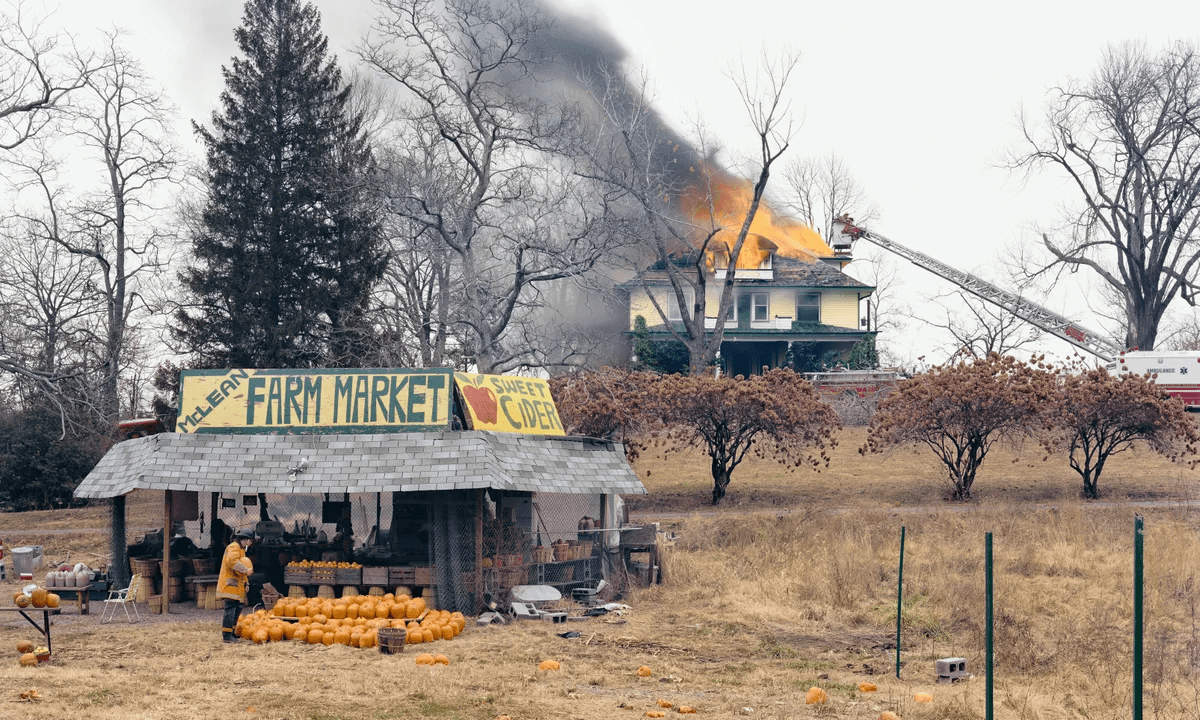
McLean, Virginia, December 1978
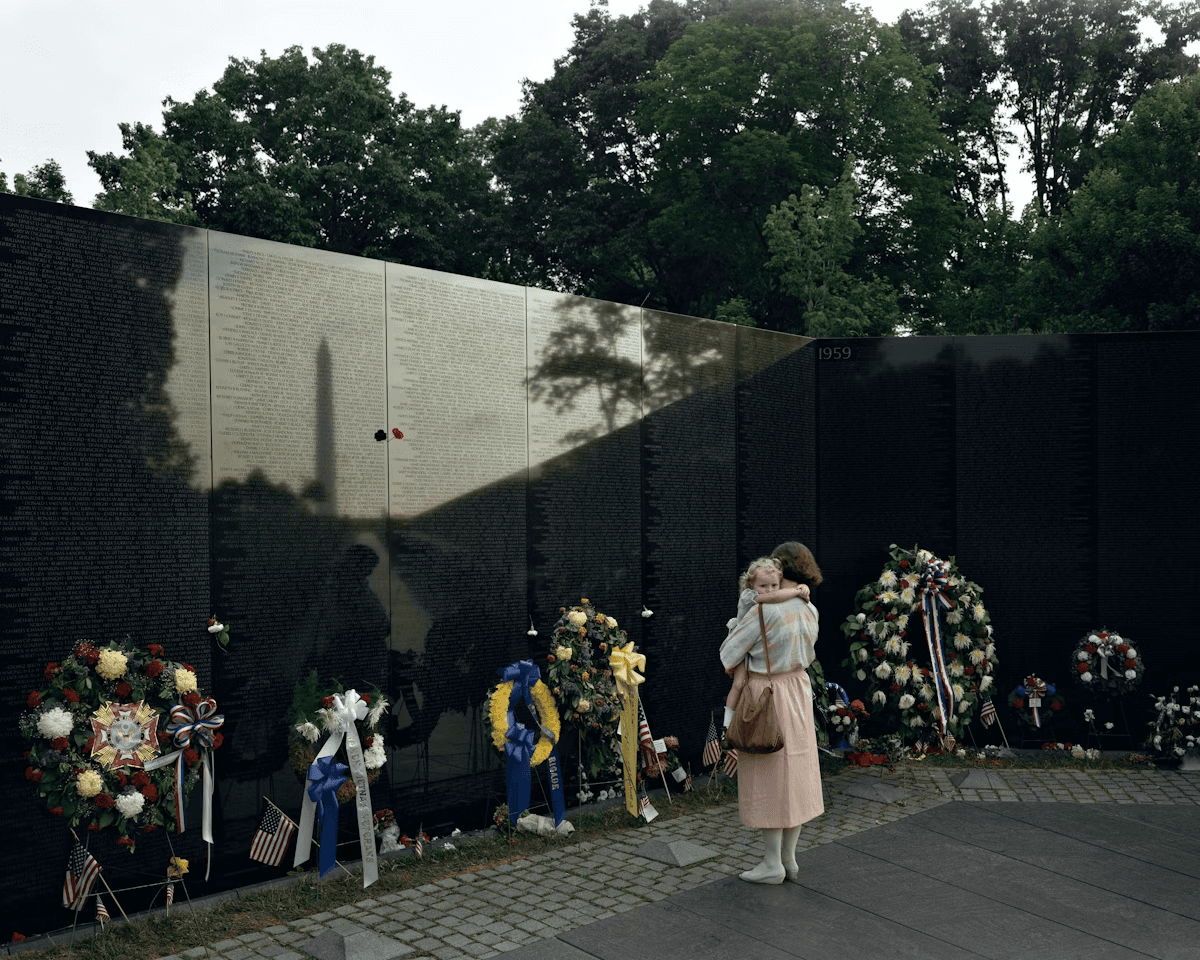
The Vietnam Veterans Memorial, Washington, D.C., May 1986
Inspired by Walt Whitman, who revised Leaves of Grass throughout his life, Sternfeld returned to American Prospects (Steidl) in 2020 to once again contemplate his portrait of the nation. The revisited edition makes visible intrinsically intertwined stories in the American landscape that have otherwise gone unnoticed: those of the indigenous nations who have been guardians of the land for millennia and now live within the belly of the beast.
Taken together, these photographs speak of two Americas—myth and truth—that have always coexisted in plain sight. “In the future, undoubtedly, these images will be full of nostalgia, just as we now see Walker Evans' photographs from the 1930s,” writes photographic critic Andy Grundberg in the book. “But for now, they speak of a time when progress lost its sense of inevitability.”
“In the future, undoubtedly, these images will be full of nostalgia, just as we now see Walker Evans' photographs from the 1930s,” writes photographic critic Andy Grundberg in the book. “But for now, they speak of a time when progress lost its sense of inevitability.”
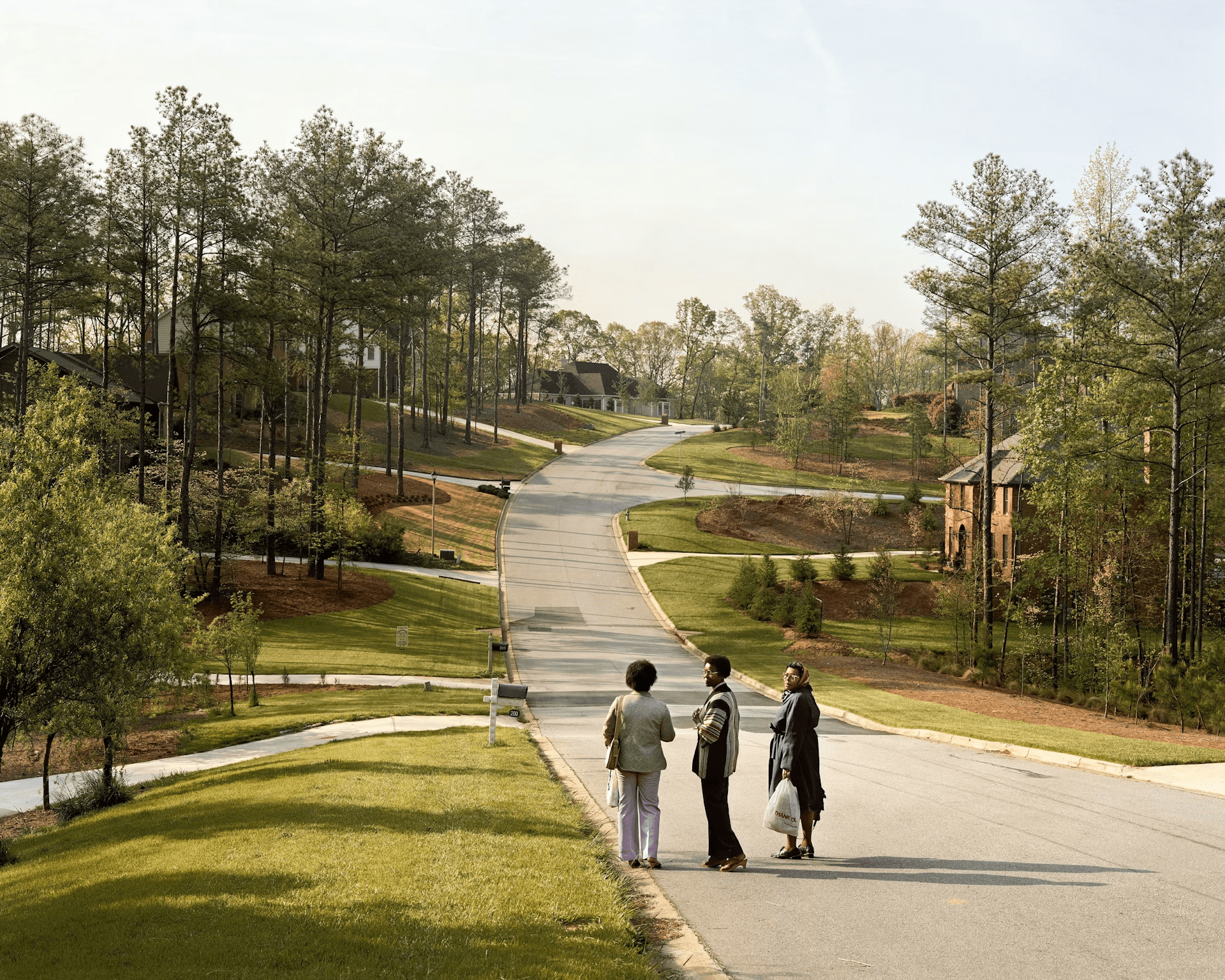
Domestic workers waiting for the bus, Atlanta, Georgia, April 1983
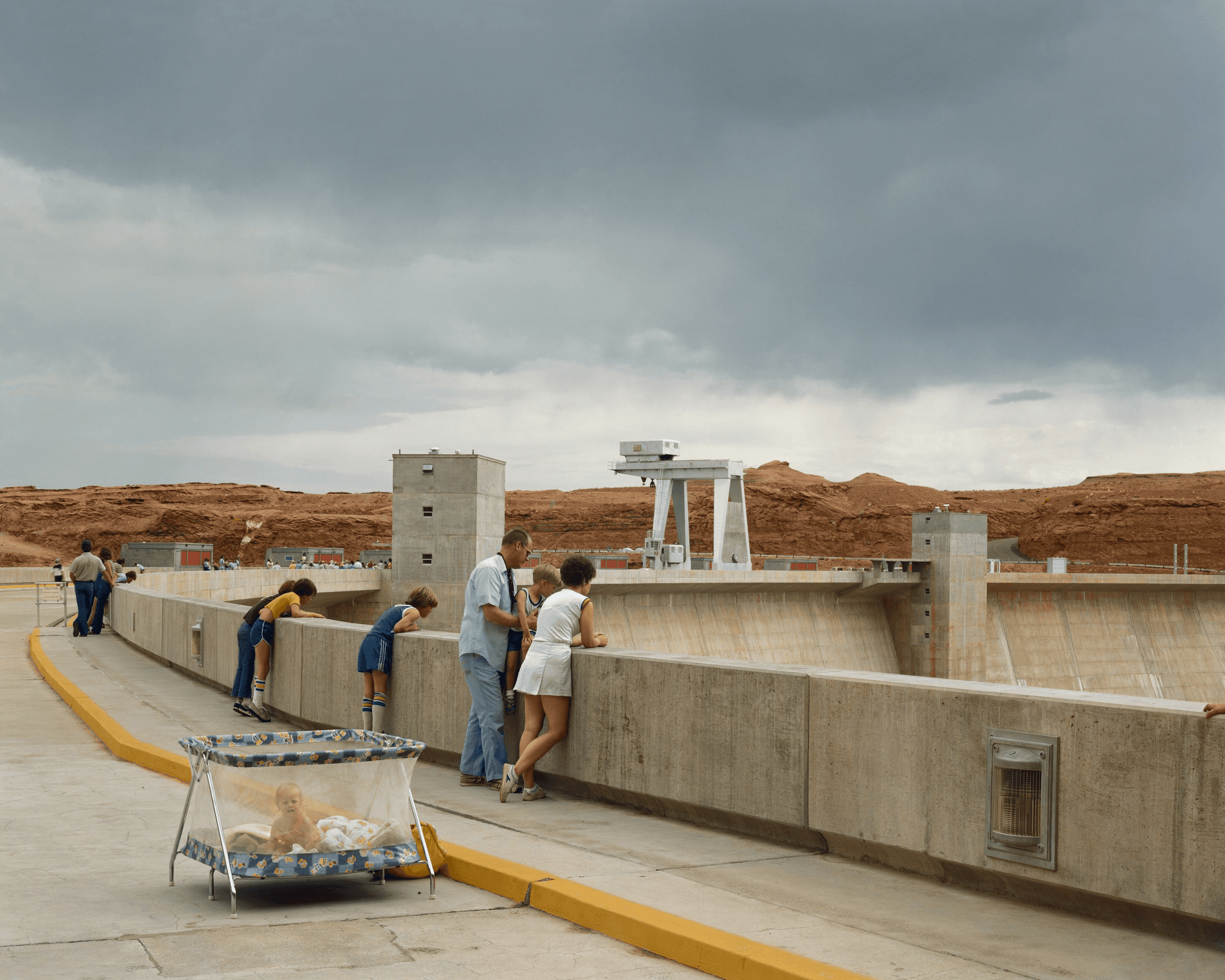
Glen Canyon Dam, Page, Arizona, August 1983
